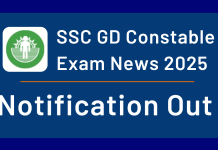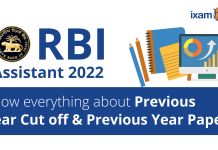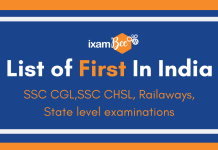Almost every day, the International Monetary Fund (IMF) and the World Trade Organization (WTO) are mentioned in the financial press or on Television. These organizations make news all over the world, from loans to Greece to trade agreements in Asia. Understanding these organizations and their goals will give you a better understanding of how they affect the global economy.
The International Monetary Fund (IMF) is a multilateral organization headquartered in Washington, D.C., with 189 member countries. The fund’s mission includes promoting financial stability and economic development.
With 164 member nations, the World Trade Organization (WTO) is also a global organization. The aim of the organization is to encourage fair trade between nations. WTO headquarters are located in Geneva, Switzerland.
Globalization has increased the need for better relations among multilateral institutions for the formulation and implementation of various elements of the global economic policy system. In the agreements that created the World Bank, IMF and WTO, each of these organizations have a mandate for such cooperation. These multilateral institutions also signed agreements for joint cooperation and frequent consultation among themselves, outlining processes to promote greater coherence in global economic policymaking.
What Is the International Monetary Fund?
The International Monetary Fund (IMF) is a non-profit organization that works to foster global economic development and financial stability, as well as international trade and poverty reduction. Member country quotas are a major determinant of voting power in IMF decisions. Simple votes are added to one vote per 100,000 special drawing rights (SDR) of quota. SDRs are a form of international monetary reserve currency developed by the IMF to complement member countries’ existing money reserves in their federal banks.
History of the IMF
The IMF was established in 1945 as part of the Bretton Woods Agreement, which aimed to promote international financial cooperation by implementing a system of fixed-rate convertible currencies. At the time, the dollar was worth $35 per ounce of gold. The IMF was in charge of the system; for example, a country might alter its exchange rate by up to 10% in either direction, but larger adjustments required approval from the IMF.
The IMF also served as a gatekeeper: countries that were not members of the IMF were not able to join the International Bank for Reconstruction and Development (IBRD), a World Bank forerunner established by the Bretton Woods agreement to finance Europe’s reconstruction after World war II.
Since the Bretton Woods regime collapsed in the 1970s, the IMF has campaigned for a system of floating exchange rates, in which market forces decide the relative value of currencies. This scheme is still in effect today.
IMF Activities
Monitoring capacity building and lending are the IMF’s primary methods for achieving the goals.
- Surveillance
The International Monetary Fund (IMF) gathers large amounts of data on national economies, international trade, and the global economy as a whole. The organization also offers national and international economic forecasts that are revised on a regular basis. These predictions are followed by lengthy discussions on the impact of fiscal, monetary, and trade policies on growth prospects and financial stability, which are published in the World Economic Outlook.
- Capacity Building
The IMF’s capacity-building projects provide member countries with technical assistance, training, and policy recommendations. These workshops provide data collection and analysis training that feeds into the IMF’s national and global economy monitoring project.
- Lending
The IMF provides loans to countries in an economic crisis in order to avoid or alleviate financial crises. Members add funds to a pool dependent on a quota structure for this lending. Loan resources totaling SDR 11.4 billion (SDR 0.4 billion more than target) were secured in 2019 to finance the IMF’s concessional lending activities for the next decade.
Funding from the IMF is often contingent on beneficiaries implementing reforms to boost their growth potential and financial stability. These conditional loans, known as structural adjustment schemes, have been criticized for exacerbating poverty and reproducing colonial systems.
IMF: Board of Governors
Each member country has one governor and one alternate governor on the Board of Governors. Two governors are appointed by each member nation. The Board meets once a year and is responsible for electing or naming the Executive Board’s executive director. While the Board of Governors is officially responsible for authorizing quota increases, special drawing right allocations, new member admission, compulsory removal of members, and modifications to the Articles of Agreement and By-Laws, it has delegated the majority of its powers to the IMF’s Executive Board in practice.
The International Monetary and Financial Committee and the Development Committee advise the Board of Governors. The International Monetary and Financial Committee, which has 24 members, keeps track of global liquidity and capital transfers to developing countries. The Development Committee, which is made up of 25 members, advises on key development issues as well as the financial tools needed to support economic development in developing countries. They also assist with trade and environmental concerns.
IMF: Scandals
Managing Director Lagarde (2011-2019) was found guilty of giving businessman-turned-politician Bernard Tapie preferential treatment while pursuing a legal challenge against the French government. Lagarde was the French economic minister at the time. The fund’s 24-member executive board put to rest all suggestions that she will have to resign within hours of her indictment, praising her “outstanding leadership” and the “wide respect” she commands around the world.
Rodrigo Rato, the former IMF Managing Director, was arrested on April 16, 2015, on charges of bribery, embezzlement, and money laundering. Rato was found guilty of embezzlement and sentenced to 4 12 years in prison by the Audiencia Nacional on February 23, 2017. The sentence was upheld by the Spanish Supreme Court in September 2018.
World Trade Organization
The World Trade Organization (WTO) is a multilateral organization that governs and promotes international trade. It began operations on January 1, 1995, as a result of the 1994 Marrakesh Agreement, which replaced the 1948-established General Agreement on Tariffs and Trade (GATT). With 164 member states representing over 98 percent of foreign trade and GDP, the WTO is the world’s largest international economic organization.
The World Trade Organization is based in Geneva, Switzerland. The Ministerial Conference, which is made up of all member states and meets biannually, is the highest decision-making body; consensus is emphasized in all decisions. The General Council, which is made up of delegates from all members, is in charge of day-to-day operations. Administrative, professional, and technical services are provided by a Secretariat of over 600 people headed by the Director-General and four deputies. The WTO’s annual budget is about 220 million dollars, with members contributing based on their share of global trade.
WTO: Functions
Analysts consider the following to be the most important among the WTO’s various functions:
- It is in charge of overseeing the execution, management, and activity of the agreements in question (with the exception that it does not enforce any agreements when China came into the WTO in Dec 2001)
- It serves as a venue for mediation and conflict resolution
- Furthermore, it is the WTO’s responsibility to review and propagate national trade policies, as well as to ensure their coherence and openness through surveillance in global economic policy-making
- The WTO also prioritizes technical cooperation and training to assist emerging, least-developed, and low-income countries in the transition in adapting to WTO rules and disciplines
WTO: Organizational structure
The highest authority of the WTO is the Ministerial Conference, which must meet at least every two years.
In between each Ministerial Conference, the daily work is handled by three bodies whose membership is the same; they only differ by the terms of reference under which each body is constituted.
The General Council
The Dispute Settlement Body
The Trade Policy Review Body
The General Council, whose Chair is David Walker of New Zealand as of 2020, has the following subsidiary bodies that oversee various committees:
Council for Trade in Goods
The Council for Trade in Goods is a non-profit organization that promotes international trade.
The Goods Council comprises 11 committees, each with its own set of responsibilities. The committees are made up of all WTO members. The Textiles Monitoring Body is independent of the other commissions, but it is also subject to the Goods Council’s jurisdiction. Just ten members make up the body, which is led by a chairman.
Council for Trade-Related Aspects of Intellectual Property Rights
The Council for Trade-Related Aspects of Intellectual Property Rights (TRIPS) is a non-profit organization that promotes trade-related aspects of intellectual property rights.
Council for Trade in Services
The General Council directs the work of the Council for Trade in Services, which is in charge of monitoring the operation of the General Agreement on Trade in Services (GATS). It is open to all WTO members and has the authority to establish subsidiary bodies as required.
Trade Negotiations Committee
The Trade Negotiations Committee (TNC) is in charge of the latest round of trade talks. The director-general of the World Trade Organization (WTO) is the chairperson. The Doha Development Round was assigned to the committee in June 2012. [66] [66] [66]
Financial services, domestic legislation, GATS laws, and basic responsibilities are the three subsidiary bodies of the Service Council. There are numerous committees, working groups, and working parties within the council. Trade and Environment, Trade and Development (Subcommittee on Least-Developed Countries), Regional Trade Agreements, Balance of Payments Restrictions, and Budget, Finance, and Administration are among the committees.
Working groups exist on trade, debt, and finance, as well as trade and technology transfer.
On a daily basis, there are 338 women and 285 men working for the World Trade Organization as of December 31, 2019.
WTO: Office of director-general
In January 2003, the protocols for appointing the WTO Director-General were changed to include quadrennial terms. There are four deputy directors-general. The four deputy directors-general under director-general Roberto Azevêdo as of June 13, 2018, are:
- Yi Xiaozhun of China (since 1 October 2017),
- Karl Brauner of Germany (since 1 October 2013),
- Yonov Frederick Agah of Nigeria (since 1 October 2013) and
- Alan W. Wolff of the United States (since 1 October 2017)
WTO: 2020 Director-General selection
Director-General Roberto Azevedo revealed in May 2020 that he will step down on August 31, 2020. A nomination and selection process of eight candidates is currently underway as of October 2020, with the final selection scheduled on November 7, 2020, with the agreement of 164 member countries. Ngozi Okonjo-candidacy Iweala’s gained widespread support, but on October 28, it was revealed that the US representative was opposed to her nomination.
Also Read:
RBI Grade B: Winning Strategy Part 3
List of High Courts in India As per 2021
RBI Grade B: Winning Strategy Part 2
RBI Grade B: Winning Strategy Part 1
Get Free Online Test Series, GK updates in form of Beepedia, as well as latest updates for Bank PO, Bank Clerk, SSC, RBI, NABARD, and Other Government Jobs.













